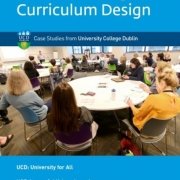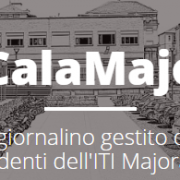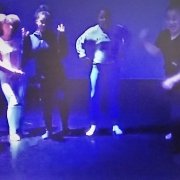Try Again, Sam
Excerpt
"Try it again, Sam!" is an integrated, inter-institutional project aimed to promote scholastic success and to counteract the school drop-out rate, which is a complex phenomenon, due to different aspects of the life of girls and boys, including educational, familiar and socio-environmental context. The general purpose of the project is to experiment a new model of prevention of education failure in the delicate transition between Primary School and Secondary School, promoting integration between school and the extracurricular reality and creating conditions of constant dialogue to ensure the learning of the essential skills of the first cycle of education. Innovative teaching activities are designed, including many laboratories and adopting inclusive teaching strategies.
Narrative, origins and objectives of the initiative
What kind of project is this? Please give a short description (summary) of it.
The project uses the connective tissue of organizations with social purposes and educational institutions, exploiting their potential.
Collaboration between several institutions in a school context makes it possible, for example, to pass on knowledge about migration flows that influence the identity of the Turin school population. The change from almost exclusively autochthonous to multicultural - with pupils and students who have just arrived in Italy or come from families in EU and non-EU countries - requires appropriate skills and ongoing training from the "educating community". The elements that characterize this transformation are a cultural enrichment, but at the same time, they often create instability and unpredictability in school situations.
In a joint work, school and other actors can promote learning processes that, taking the history of each boy and girl into account, provide a space for listening and self-expression, offering encounters in places and areas where it is possible to strengthen self-esteem and find support for academic success. In principle, the aim is to reduce early school drop-outs.
Please tell us why, in general, this project is considered a successful one?
A crucial factor was the creation of an educating community that supports the project beyond the school, in different places and time. The educating community is formed by people on the territory as associations, sport-clubs, artisans, and shopkeepers that are involved in co-design: they design a specific project for the single student, on an annual basis, not strictly connected with school curricula.
The project is divided into two areas of intervention: Primary and Secondary Prevention.
- Primary Prevention is aimed at students and pupils attending the last two years of primary school and three years of lower secondary school (age 9-14). In this context, institutions, bodies, schools and external organizations are integrated to offer educational support to facilitate learning and experiment with a new one intervention model.
- Secondary Prevention is aimed at girls and boys over the age of fourteen who have social and educational problems and are a high risk of dropping out of school. Secondary Prevention offers two modes of intervention:
- Integrated Protection, which is divided into two years:
- 1 year: children between 14 and 16 with basic knowledge of the Italian language, multi-repeating and not having obtained a compulsory school certificate;
- 2 year for boys/girls who have obtained the compulsory school certificate, who need a further accompaniment to continue their studies;
- Provincial Centers for Adult Education (CPIA) for minors between 16 and 18 years. The structured and personalized interventions are aimed at obtaining the compulsory certificate and to possibly continue in higher education or professional training.
- Integrated Protection, which is divided into two years:
The schools participating in the project have to incorporate it in the three-year plan of its training (PTOF). The planned interventions must be flexible in order to adapt to the specific needs that can emerge. Interventions are constantly monitored.
The size/scope of the project in the last 5 years:
- For Primary Prevention: 3000 boys/girls - 30 projects (one per school), about 135 classes involved with 90 educators and 20 associations taking part
- For Secondary Prevention: 60 boys/girls, one school, 4 teachers, 10 educators
- For Adult education/CPIA: 100 boys/girls, 10 teachers directly involved, 10 educators
And why would you consider it a grass-roots initiative?
In 1989 a 14 year-old boy was found dead on a bench due to an overdose. After this dramatic episode, a group of volunteers started a joint intervention to recover the students that moved away from school, living in the neighborhoods of Torino. In the last 20 years, the focus of the project has changed from children using drugs to children with a migrants background: generally speaking, the project is devoted to socially and economically disadvantaged children.
What challenges needed to be solved in this project?
The objectives of the project are:
- putting girls and boys who have moved away from the educational circuit back into school and social paths
- creating a new model of preventive intervention, from primary school up to secondary school, starting from the construction/valorization of a vertical and transverse curriculum, based on the competencies framework, among which citizenship skills;
- to favor the educational success of all students through the elaboration of a curriculum for "essential nucleya" and the adoption of strategies for inclusive education;
- to strengthen the synergy with the resources external to the school by supporting the integration between the work of teachers, educators, and volunteer educators and all the subjects of the territory
- consolidating the "educating community" that promotes and protects diversity;
- adopting a cooperative and teamwork approach;
- investigating and learning about the world of adolescents: evolution, transformation, change.
Is this initiative based on any particular theoretical framework? Which one?
(Appendix) Is your intervention standing on its own or is it a part of a bigger and more holistic approach?
The Try it Again, Sam project is a stand-alone project, but due to the many stakeholders involved it has a holistic approach.
Please describe the group(s) intended as beneficiaries of this initiative
Why has this group (have these groups) been chosen?
The target group of children between 9 - 16 years old has been chosen because there are little supportive programs of this kind in the area of Torino.
Could you please tell us something about the relative size of the (of each) target group, within the school/university population, region and/or country?
Regarding the socio-economic frailty in 2016-17, the school of the Piedmont region that participated in the monitoring of inclusive action, indicated a grand total of 18.129 students, equal to 29% of the regional population.
Which social characteristics are taken into account and what is the geographical area covered?
The project is mainly addressed to:
- children between 14 -16 with a basic knowledge of the Italian language, multi-repeating
- boys/girls who have obtained the compulsory certificate but who need further assistance to continue their study;
On which level is the project implemented?
Please describe the political and socio-economic factors that you believe have been important enablers for your initiative
Did the initiative have political support?
Yes, there is public support from the municipality of Turin and also interest from the Ministry of Education, which sees the project as Good Practice and therefore give four teachers the opportunity to work on this project.
How did it fit with local, regional or national policies?
The project fits in with the national policies related to supporting students with disabilities and fostering inclusion and also at regional level regarding the students with socio-economic frailty and to counterpart school drop-outs.
Who are the stakeholders supporting the initiative?
- City of Turin Ministry
- School Principals
- NGO's
- Researchers
- Teachers & Educators
- Regional Ministry of Education
Are there particular demographic changes present that are influencing the project?
Migration flow that impacts on schools and Adult Education Centers, Economic crisis, Family breakdown
What is the institutional strategy and culture of the (educational) organization?
The project is based on an inter-professional collaboration were educators and teachers work together in designing the intervention while also in assisting students. Usually, the educators stay with all the class 4 hours per week, while, in adult education, they are always present during the lessons, focusing on citizenship.
To what extent does the initiative have an influence on institutional policy (or potential influence) of the (educational) organization?
(Appendix) Is there public support for your initiative and the issue it addresses?
There is the support of three departments of the municipality of Turin and the Ministry of Education.
(Appendix) What other factors do you think have been important for the success of this initiative?
Please describe the overall initiative design and the methods and tools used to reach the goals
Please describe the specific activities carried out.
Innovative teaching activities are designed, including many laboratories, adopting inclusive teaching strategies. For example, they worked on how to solve the problem of the sun in the classroom - to design a new curtain system, using geometry, astronomy, and economic aspects and also making a new curtain… REAL tasks. Moreover, Try it Again, Sam organize events, theater plays and shows that are based on the autonomy of the classes. Observation usually takes place first before starting an intervention, and then the design and the implementation of the program takes place.
What were the key roles (teacher, student, management team etc.) within the project?
- Schools sign the protocol with the City and nominate a reference teacher for the school;
- The Teacher Referent coordinates the other teachers of the classes, manages requests from other teachers, welcomes and manages the students, and provides data to the other organizations;
- The Education Service Municipal Referent manages the schools and all the other organizations involved, works on fundraising, and gives support for the planning and the monitoring of the actions;
- Social Services Assistant: manages the relations with different education actions towards the students;
- Operators from associations: based on the specific aim of the association, propose and manage activities with the students, supporting them also on relational aspects;
- Trainers: support teachers in their actions;
- Orientators: support students in their educational choices;
- The general manager of the project: manages the training of the teachers and the actions and coordinates all the relations among the different subjects in terms of entities.
What ideas, tools, theories, models, methodology (etc.) have been used to reach the goals?
Try it Again, Sam adopts an approach called Active Learning, which is a form of learning in which the teacher strives to involve students in the learning process more directly than in other methods.
What are the final revenues of the project?
- Failure reduction
- Successful training
- Completing the first education cycle
- Obtaining the certification
Please describe if your project ensured its sustainability
If so, how did you ensure the short-term impact of the project?
The project is based on private-public financing, which guarantees a first short-term impact.
And how did you ensure the long-term impact of the project?
No plan at the date.
Has your project been replicated elsewhere?
No.
Please tell us about the resources used in this initiative
What was the budget for the initiative?
The costs of the project by the Bank Foundation: about 700.000 € (for the educators' salaries). But the overall budget is about 1,5 million Euro; the municipality of Turin contributes around 100.000 Euro to pay counselors, psychologist etc. The schools don’t get any money for this activity: all the work is done on a voluntary basis.
How much did the initiative depend on volunteers?
The contributions of the associations and volunteers are important but not crucial.
How were the costs perceived by the public/the sector/other stakeholders?
The project is perceived as high in costs.
To what extent did the initiative achieve its objectives?
Please describe the evidence to support the success of your initiative.
An external monitoring system was appointed: they are collecting data that should be available in the next months.
Did the intervention lead to any unintended (positive) outcomes?
The project was particularly welcomed by schools and teachers and was perceived as a great social help, especially when it came to catching difficult social cases.



 Caritas Wien/Stefanie Starz
Caritas Wien/Stefanie Starz





